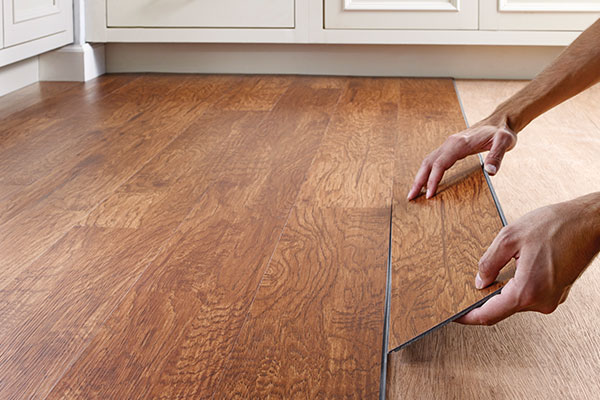Laminate flooring layout is not difficult. Once you have done this job you will wonder why people hire professionals to do the work. Laminate flooring is arid work. There is no mess of mortar, adhesives etc. Simple tools like the simple saw are suitable to carry out the work. No nails to fix together the tiles as laminates snap together in tongue and groove procedure. Imagine you are doing a large puzzle. You can do it yourself. It is suitable for all the rooms in the house.

Clear away the current flooring and inspect it for evenness and neatness. In case the installation is for a room which experiences high humidity like a bathroom or laundry room. A layer of vapour obstructer is needed prior to installation. Spread out laminate planks in the room for a day. This way the planks will get adapted to temperature as well as humidity.
Laminate flooring can be initiated over the existing flooring like vinyl if it is flat and smooth. Place an underlay of foam sheeting as a foundation for the planks. On uneven surface spread underlay of thin plywood prior to spreading of foam sheets. In the preparation, phase discards baseboards and cut the perimeter shape according to air return ducts fixed in the floor and around doorways. The flooring will simply slip under it. Calculate the measurement of the room from the wall and divide the distance by the width of the planks. You will know the dimensions of the final row.
Examine and check the planks. The first row begins with a side of the straight wall. Disconnect the tongue through long side joints and short side as well. For this, you will need a table saw. If the wall is uneven trace the outline with a compass which falls on the tongue side in the plank and incises with ac jigsaw. Install the first row keeping the tongue side away from the wall. Assemble the tongue and groove so that planks are fixed, and joints closed. All laminate floorings expand and contract because of temperature and moisture. Leave a 3/8-inch spacer all around the wall and edges. At the end of the first row cut the length needed to complete the row.
Begin with the second row from where you began for the first row. The seams will be laid out well. The seams should stagger at least six inches from adjoining seam. Make sure there are no gaps between the seams. Complete laying out through the last row. Spread out a sealant through the full perimeter and make it a watertight seal.
There is another type of floorings like rubber bathroom tiles that you can do it yourself. In present times these tiles are available in attractive shades, designs and textures. Rubber flooring is lasting, soft to touch, and warm below the feet. Even in bathrooms, they are easy to clean and maintain. Moreover, they are anti-skid, pleasing to the eye and has ease of walking. The moisture builds up is lacking here which is an added benefit. Its installation is done with ease and does not cost much.
Know more at https://www.wholesalershop.in
